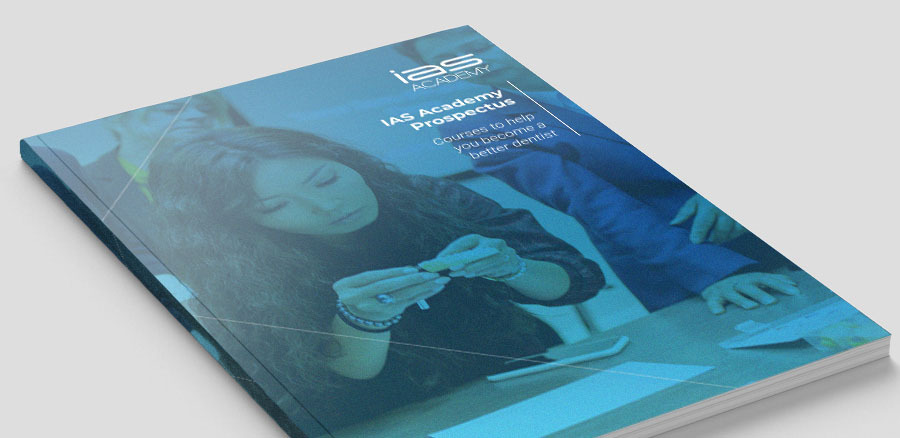Support Provides Confidence in Anterior Alignment Orthodontics
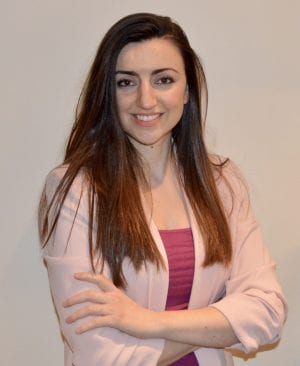
Treatment carried out by Vasiliki Bilerou

Vasiliki Bilerou DipDS, PgDip (Resto), qualified from the Dental School of Athens, Greece, in 2009. After practising dentistry for two years, she relocated in the UK where she worked as an associate in a few dental practices. In 2014, she completed a postgraduate diploma in Clinical Restorative and Cosmetic Dentistry at the University of Central Lancashire.
Dr Bilero is working as a general practitioner with a special interest in Restorative Dentistry, focusing on highly demanding aesthetic cases and minimally invasive dentistry at the Vallance Dental centre and MyDentist Stevenson square in Manchester. She trained in London on the ClearSmile Inman Aligner and ClearSmile Aligner systems.
The patient – a 23-year-old young lady – presented to the practice for a routine appointment. During the examination she revealed that she had never liked her ‘front crossed teeth’ and was interested in treatment to correct it. The patient had not had any previous orthodontic treatment in the past.
All the possible options were discussed with the patient, including fixed orthodontic treatment and more invasive restorative procedures. In the end, she opted to align her teeth using ClearSmile Aligners and then whiten and restore with composite edge bonding as necessary.
After ensuring that the patient was medically and dentally fit, a full orthodontic assessment was conducted with the results shown in the table.
| Measurement | Result |
|---|---|
| Skeletal | Class I |
| FMPA | Average |
| Lower Face Height | Average |
| Facial Asymmetry | None |
| Soft Tissues | No abnormalities detected |
| Incisor Relationship | Class I |
| Overjet | RHS 4mm, LHS 5mm |
| Overbite | RHS 3mm, LHS 2mm |
| Crossbite | None |
| Displacement on Closure | None |
| Molar Relationship | Class I | Class I |
| Canine Relationship | Class I | Class I |
| Teeth Present | 765321 | 12345678 | 87654321 | 1234567 |
| Centrelines | Coincident |
Problem list:
- Mild crowding in the upper arch between UR1 and UL1
- Mild crowding in the lower arch between LL2 and LL3
- Diemester between upper centrals
Treatment aims – ideal:
- Align both the upper and lower arch
- Close the diemester
- Rotate the UL1
- Tooth whitening and composite edge bonding
Treatment aims – compromised:
- Align the upper arch
- Rotate the UL1
- Accept the mild crowding in the lower arch
- Accept possibility of small diemester remaining
- Tooth whitening and composite edge bonding
A periapical radiograph and a full set of intraoral photographs were taken, and the patient was informed on all aspects of treatment. She was warned about any potential minor discomfort, as well as the need for excellent oral hygiene, a good diet and total compliance with the proposed treatment plan. It was also discussed that a diemester may be present at the end of treatment with anterior alignment orthodontics. The patient was perfectly happy with all of the above and provided consent to commence treatment with the ClearSmile Aligners.
Upper and lower impressions were then taken and sent to the IAS laboratory team to further assess the case and proceed with arch evaluation and digital planning through the Archwize programme. This generated a final visual representation of what the patient could look like post treatment and the patient was happy to continue with the fabrication of the aligners. The Archwize also estimated that 1.5mm of space would need to be created for optimal tooth movement.
Due to the difficulty of the case with regards to the UL1 tooth rotation required, a sequence of 18 aligners was necessary to achieve a good acceptable final result, both functionally and aesthetically.
During the first appointment, interproximal reduction (IPR) was performed using interproximal strips. Composite anchors were placed buccally on the anterior teeth following exact instructions sent by the lab. At each consequent appointment, the patient was given a sequence of six aligners, as well as detailed instructions on removal and replacement of the appliances, cleaning and oral hygiene. Every time a new sequence of aligners was provided to the patient, some IPR was performed as the lab had advised. The space created was always measured with a gauge in order to maximise precision. Initially, the patient was reviewed every three weeks to check progress of the tooth alignment and discuss any problems or concerns that may have risen. This changed to a month after the 12th aligner, before a final review where the final impressions were taken for whitening.
Furthermore, photographs were taken at each step to monitor the progress of the treatment and document it. The last three aligners were used for very small, although still important, refining movements.
In this case, the patient was very compliant – she was the kind of patient every dentist wishes to treat! She coped very well with the appliances in her day-to-day life and was really excited to see the changes in her smile, providing further motivation to follow instructions.
When the desired alignment had been achieved, some restorative steps were undertaken in order to finalise the aesthetics of the patient’s smile. Due to the significant rotation of the UL1, a small diemester had been created between the central incisors and this was corrected using composite. All the composite anchors were removed from the teeth. Some whitening followed using 10% carbide peroxide with customised home trays, after a professional cleaning session. The next step was composite edge bonding incisally and mesially on the UL1, as well as mesially on the UR1 using BRILLIANTbrilliant EverGglow (Coltene) composite material and layering technique. The two-week post composite restoration review showed that the black triage formed was resolved by second degree healing from the attached gingiva.
Finally, impressions were taken for fixed and removable retainers. The fixed retainer was bonded using flowable composite. It was very rewarding to see the patient become emotional at this end stage and she was very grateful for having achieved her desired smile.
The support of the IAS team – including from mentors on the online forum and the team from the lab – was excellent and invaluable throughout the whole treatment. Advice was provided to me whenever I needed it or was in any doubt about the best next step. This case along with the supervision and help I received from the IAS team gave me confidence to continue with motivation and passion on other orthodontic cases.
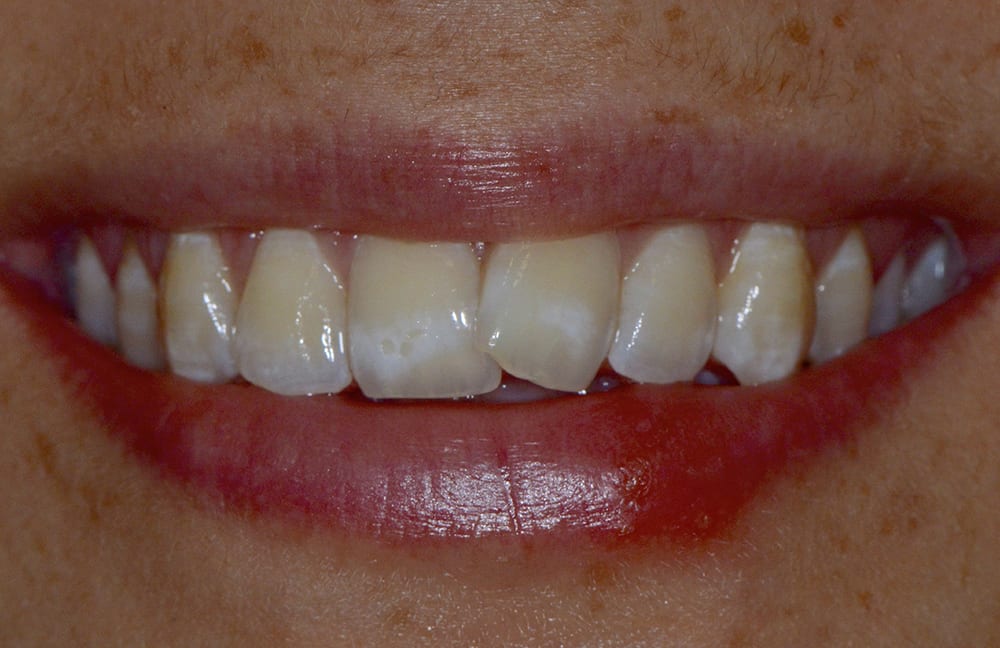 Pre treatment smile
Pre treatment smile 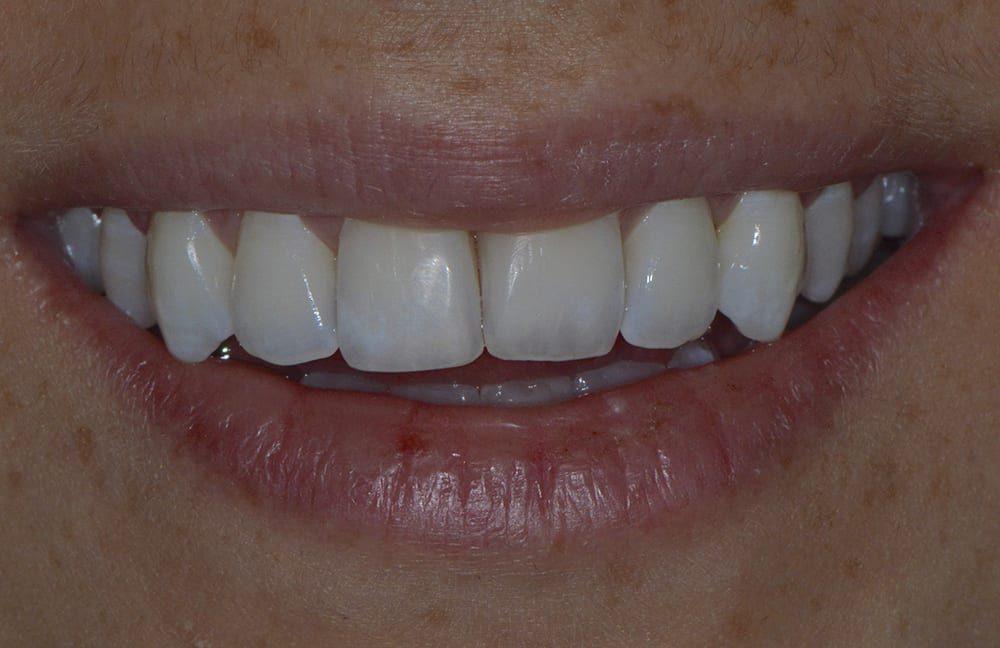 Post treatment 2 weeks - diemester closed
Post treatment 2 weeks - diemester closed 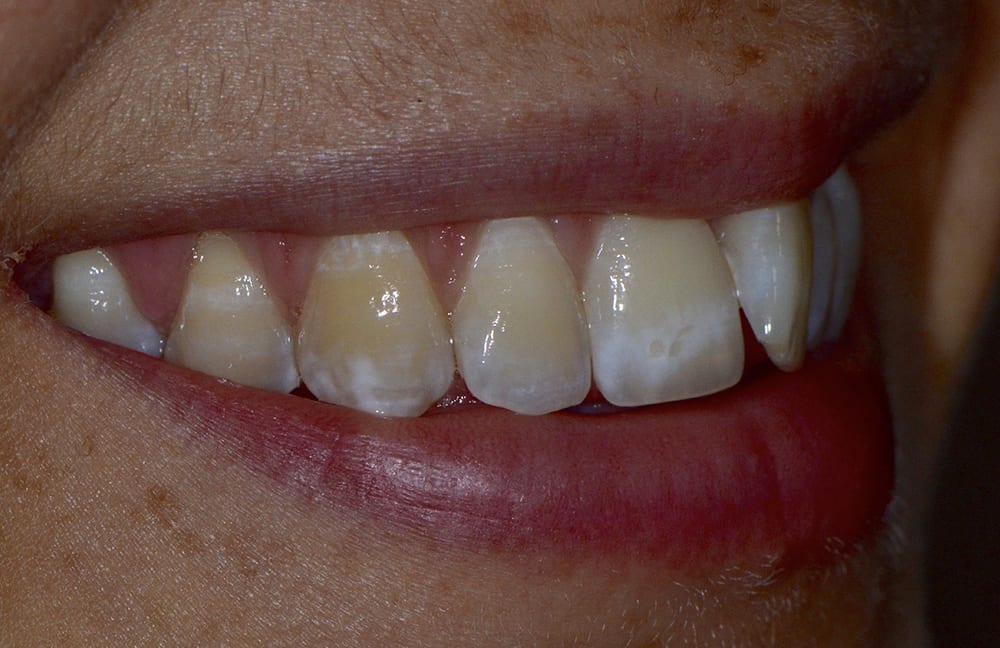 Pre treatment right lateral
Pre treatment right lateral 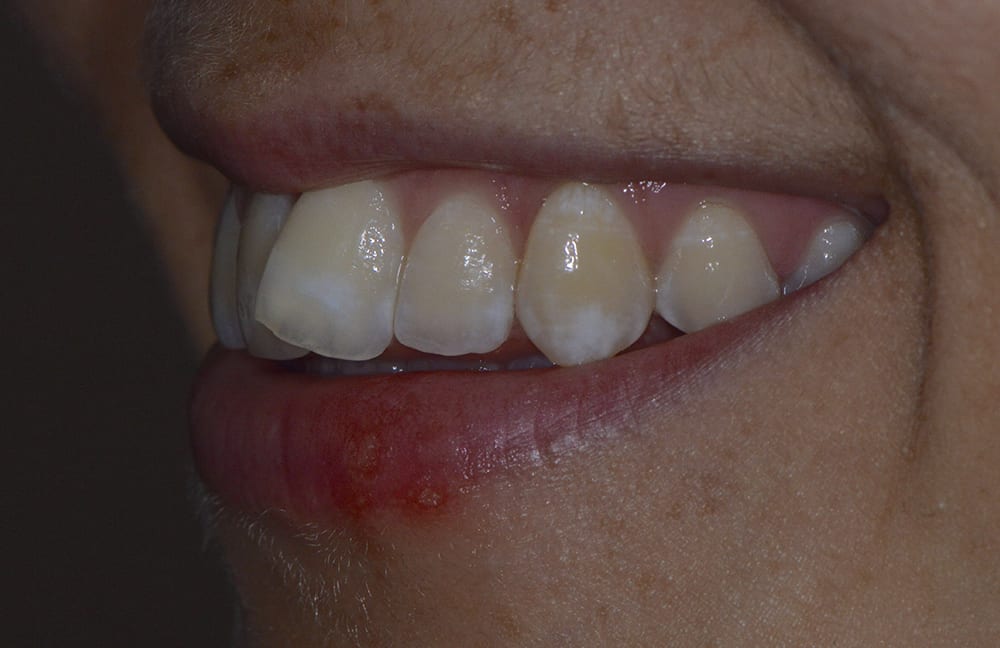 Pre treatment left lateral
Pre treatment left lateral 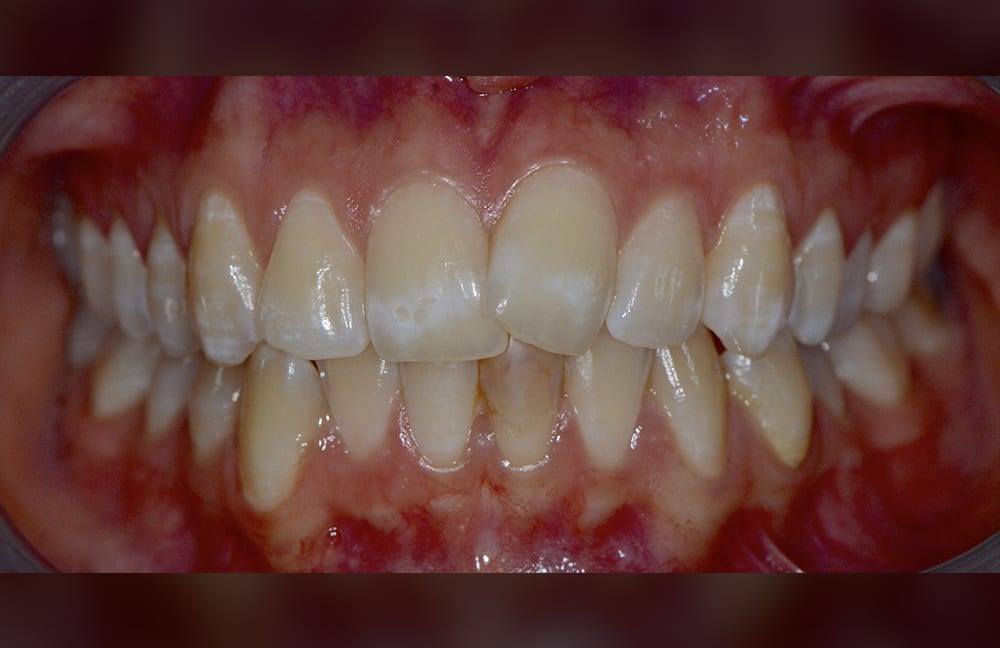 Pre treatment retracted
Pre treatment retracted 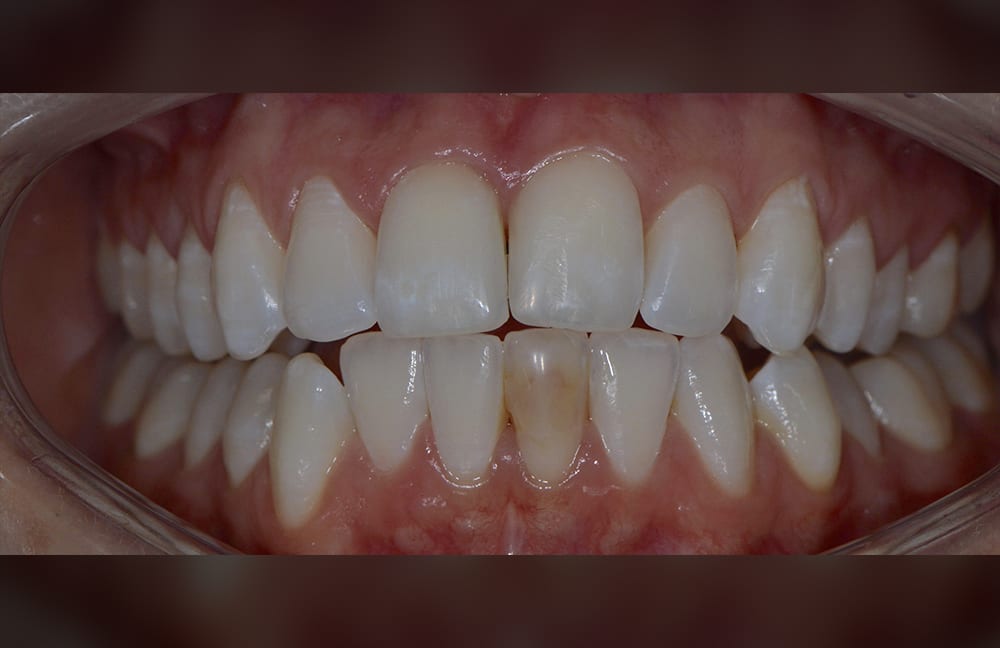 Post treatment retracted
Post treatment retracted 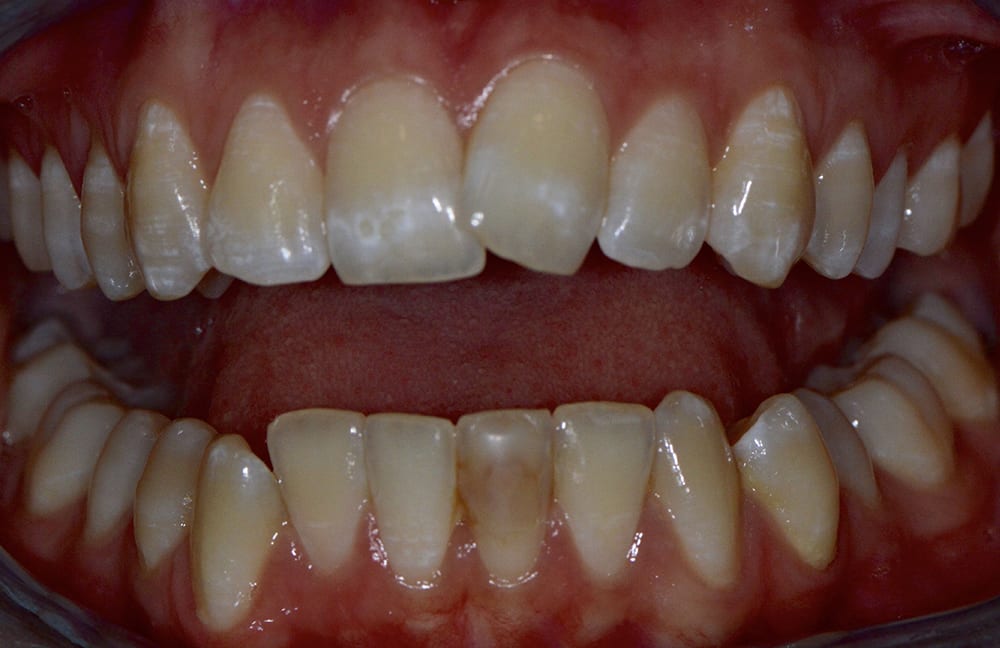 Pre treatment open bite
Pre treatment open bite 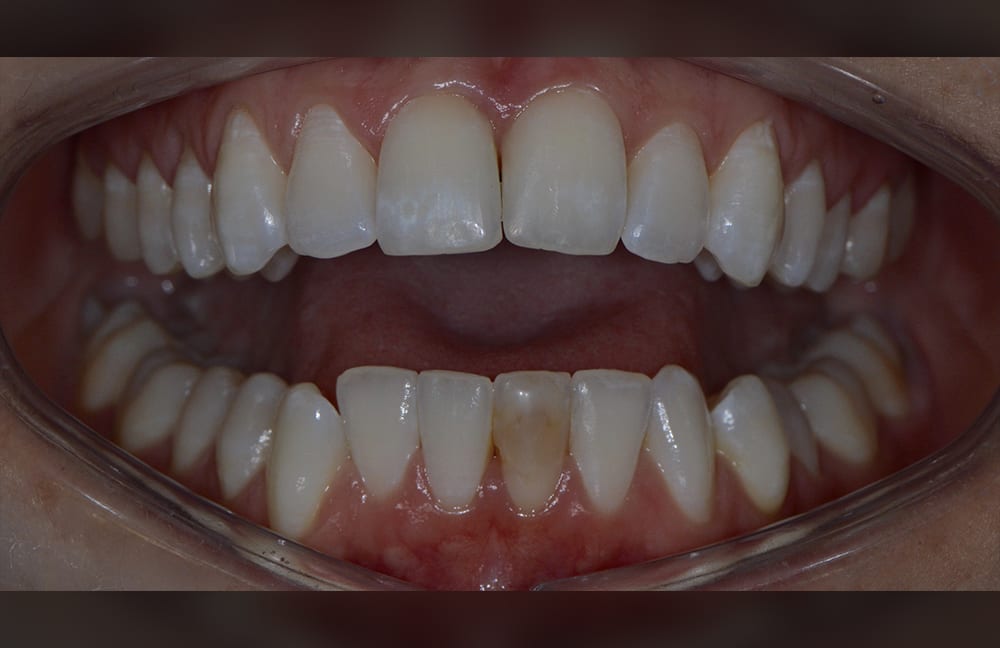 Post treatment open bite
Post treatment open bite 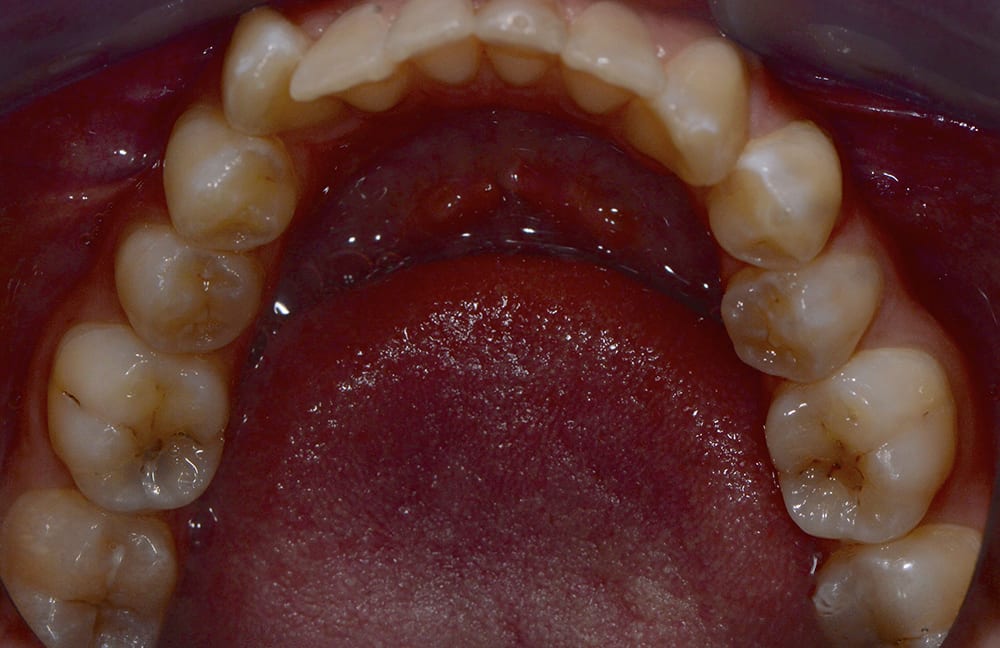 Pre treatment lower occlusal
Pre treatment lower occlusal 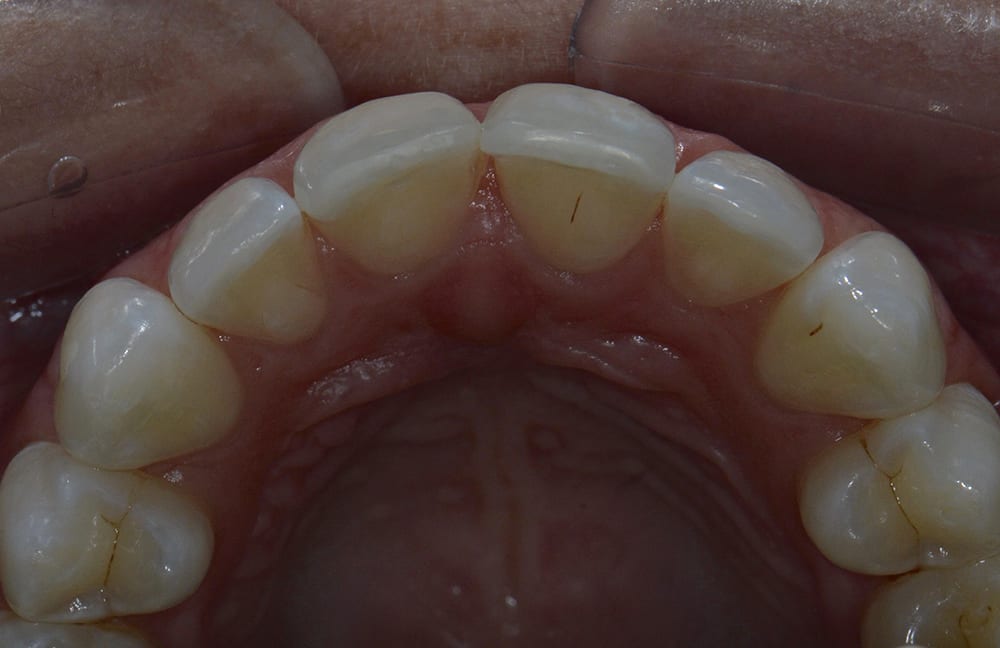 Post treatment upper occlusal
Post treatment upper occlusal 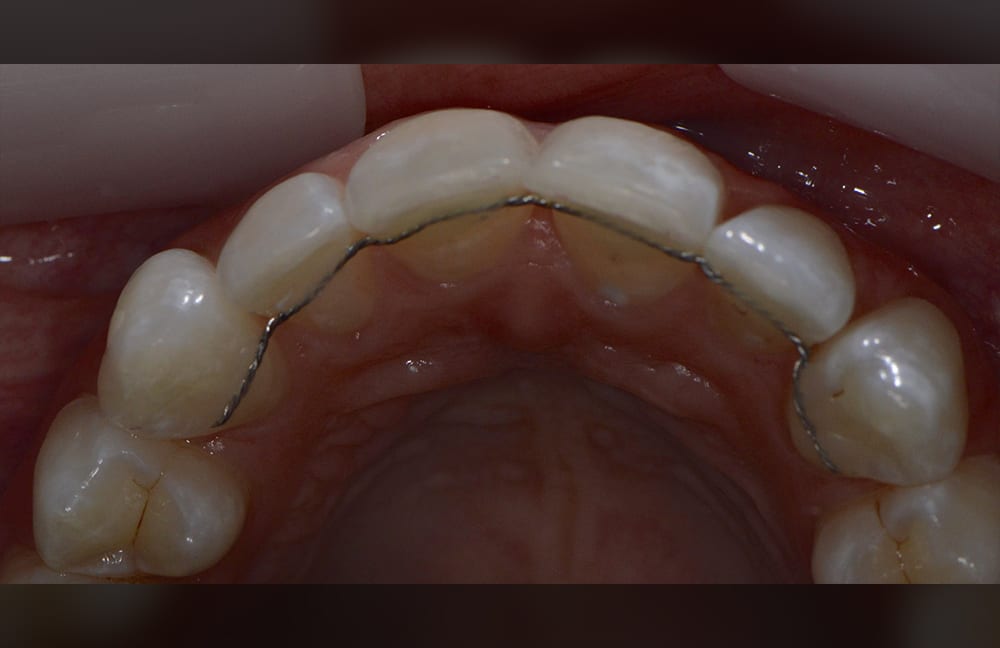 Post treatment upper bonded retainer
Post treatment upper bonded retainer 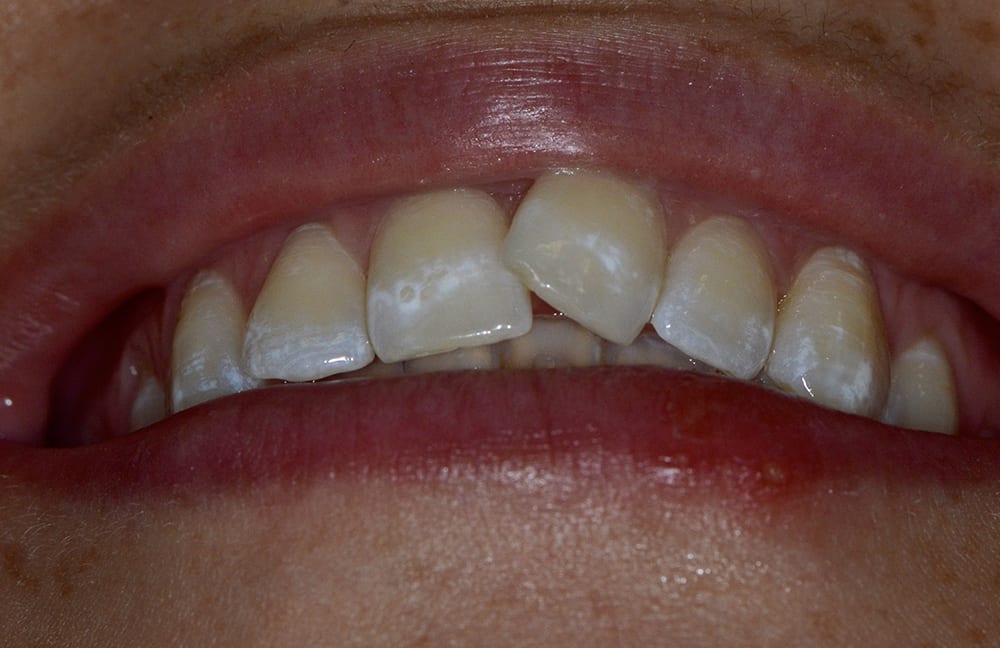 Pre treatment chin up view
Pre treatment chin up view 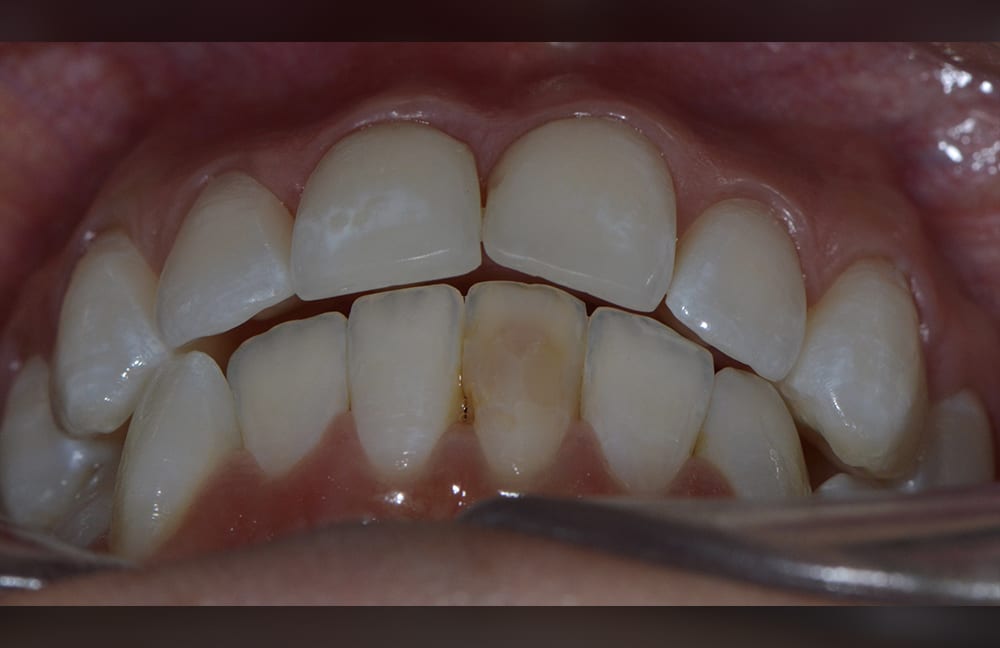 Post treatment chin up
Post treatment chin up 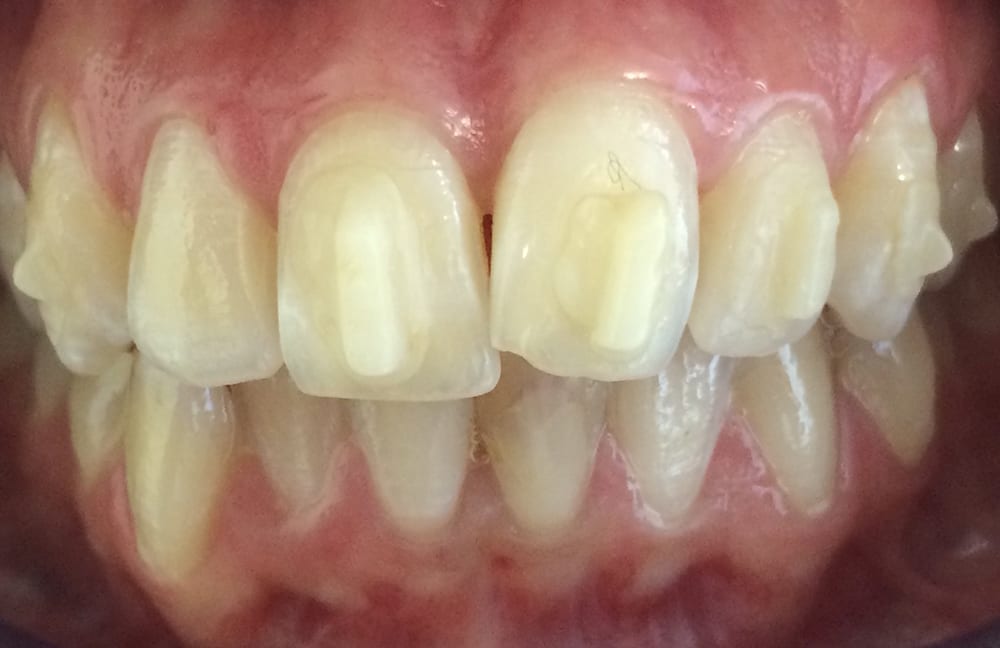 At X weeks into treatment
At X weeks into treatment 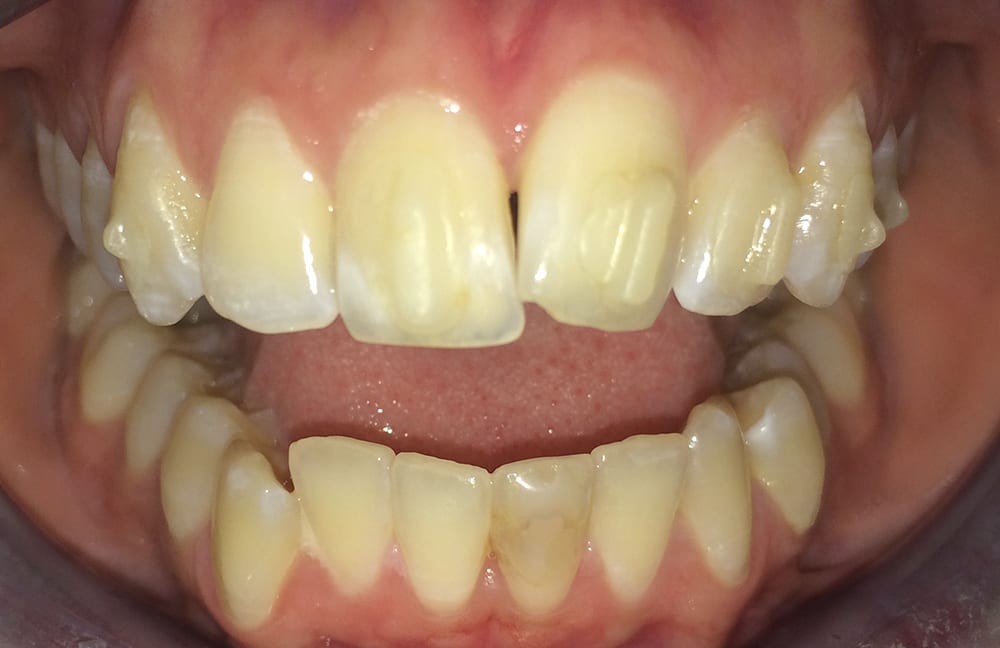 At X weeks into treatment
At X weeks into treatment 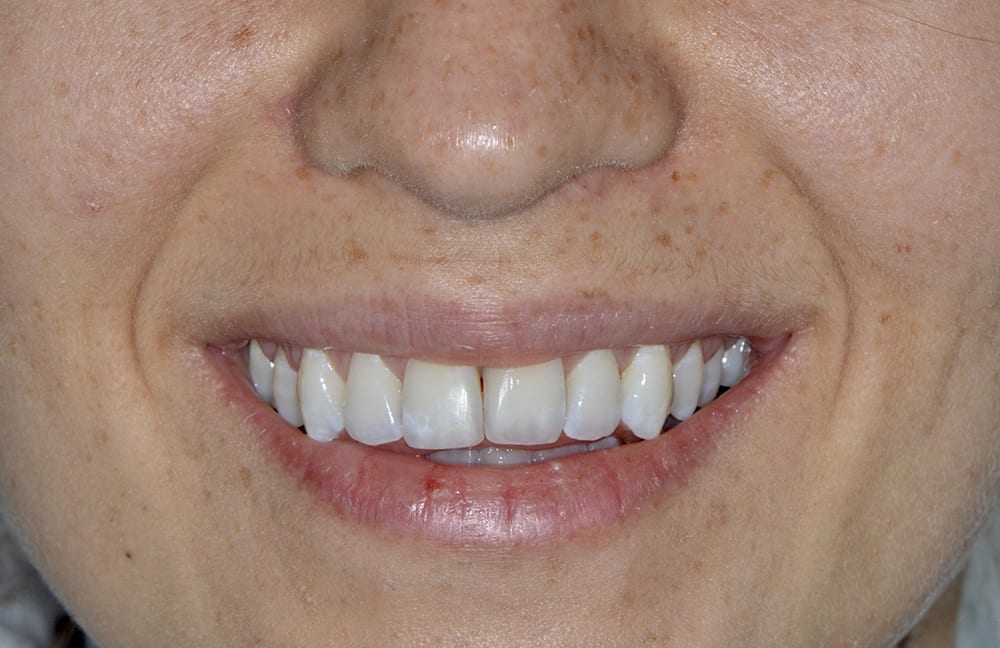 Post alignment and whitening smile
Post alignment and whitening smile 
